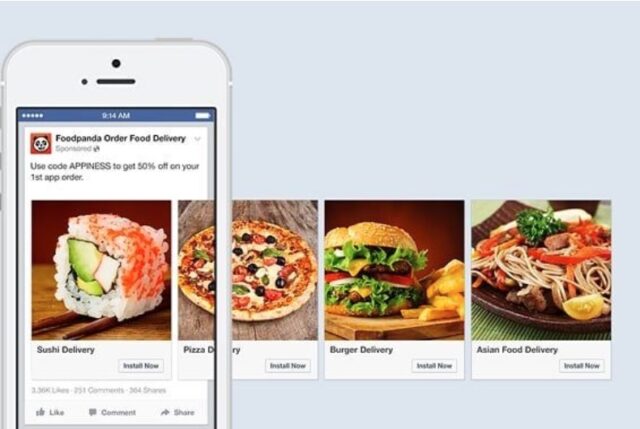In the world of digital marketing, carousel ads have emerged as a highly effective tool for product promotion. These interactive ads allow you to showcase multiple products or features within a single advertisement, engaging users with a visually appealing and interactive format. If you’re looking to boost your product promotion strategy, here are some essential tips for using carousel ads effectively.

Screenshot
Table of Contents
Toggle1. Understand the Carousel Ad Format
Before creating your carousel ads, it’s important to understand their unique format:
- Multiple Images/Videos: Carousel ads allow you to display 2 to 10 images or videos that users can swipe through.
- Individual Links: Each carousel card can have its own link, directing users to specific products, landing pages, or promotions.
- Customizable Content: You can include different headlines, descriptions, and calls to action for each card, tailoring the message to your audience.
2. Choose the Right Platform
Carousel ads are available on various platforms, including Facebook, Instagram, LinkedIn, and Google. Consider where your target audience is most active and choose the platform that aligns with your marketing goals:
- Facebook & Instagram: These platforms are excellent for visually-driven businesses and can help reach a wide audience.
- LinkedIn: Great for B2B marketing, carousel ads on LinkedIn can showcase professional services or case studies.
- Google Ads: Use carousel ads in Google Display Network to promote multiple products in a visually engaging manner.
3. Craft Compelling Visuals
Visuals are the heart of any carousel ad. To create engaging visuals:
- High-Quality Images/Videos: Use professional images or videos that highlight your products effectively. Poor quality can deter users from engaging.
- Consistent Branding: Ensure that all visuals align with your brand identity, including colors, fonts, and style.
- Showcase Product Features: Use different angles, close-ups, or lifestyle shots to highlight unique features and benefits.
4. Tell a Story with Your Carousel
Carousel ads can be more effective when they tell a story. Consider these strategies:
- Sequential Narrative: Organize your carousel cards to create a narrative flow, such as starting with the problem your product solves and progressing to the solution.
- Theme-Based Grouping: Group products by themes or collections. For instance, if you sell clothing, you can create a carousel featuring different outfits for various occasions.
- Highlight Customer Testimonials: Use one card to showcase customer reviews or testimonials to build trust and credibility.
5. Optimize Calls to Action (CTAs)
Effective CTAs are crucial for guiding users on what to do next. Consider the following:
- Be Clear and Direct: Use straightforward language that encourages users to take action, such as “Shop Now,” “Learn More,” or “Get Yours Today.”
- Tailor CTAs to Each Card: Customize CTAs for each carousel card based on the product or message being conveyed.
- Create Urgency: Incorporate time-sensitive language, like “Limited Time Offer” or “While Supplies Last,” to encourage immediate action.
6. Utilize Targeting Options
Most ad platforms offer robust targeting options, allowing you to reach the right audience. Take advantage of these features:
- Demographic Targeting: Target based on age, gender, location, and interests to ensure your ads reach potential customers.
- Retargeting: Use retargeting strategies to reach users who have previously interacted with your website or social media but didn’t make a purchase.
- Lookalike Audiences: Create lookalike audiences based on your existing customers to find new prospects who are likely to be interested in your products.
7. Analyze Performance and Optimize
Once your carousel ads are live, monitor their performance closely:
- Track Key Metrics: Analyze metrics such as click-through rates (CTR), conversions, and engagement rates to gauge effectiveness.
- A/B Testing: Test different visuals, headlines, and CTAs to identify what resonates best with your audience.
- Make Adjustments: Based on your analysis, adjust your ads to improve performance continuously. This might include changing images, rephrasing CTAs, or refining targeting.
8. Consider Mobile Optimization
With a significant portion of users accessing ads on mobile devices, it’s essential to optimize your carousel ads for mobile viewing:
- Test on Mobile Devices: Ensure that your carousel ads display correctly on various mobile devices and screen sizes.
- Shortened Text: Keep text concise and easy to read on smaller screens. Avoid cluttering your visuals with excessive information.
- Quick Load Times: Optimize image sizes to ensure fast loading times, preventing users from losing interest.
Conclusion
Carousel ads offer a dynamic way to promote your products and engage your audience. By understanding the format, crafting compelling visuals, telling a story, optimizing CTAs, and utilizing targeting options, you can create effective carousel ads that drive engagement and conversions. Remember to analyze performance regularly and make necessary adjustments to maximize the impact of your product promotion efforts. Embrace the power of carousel ads and watch your brand thrive in the competitive digital landscape!


No responses yet